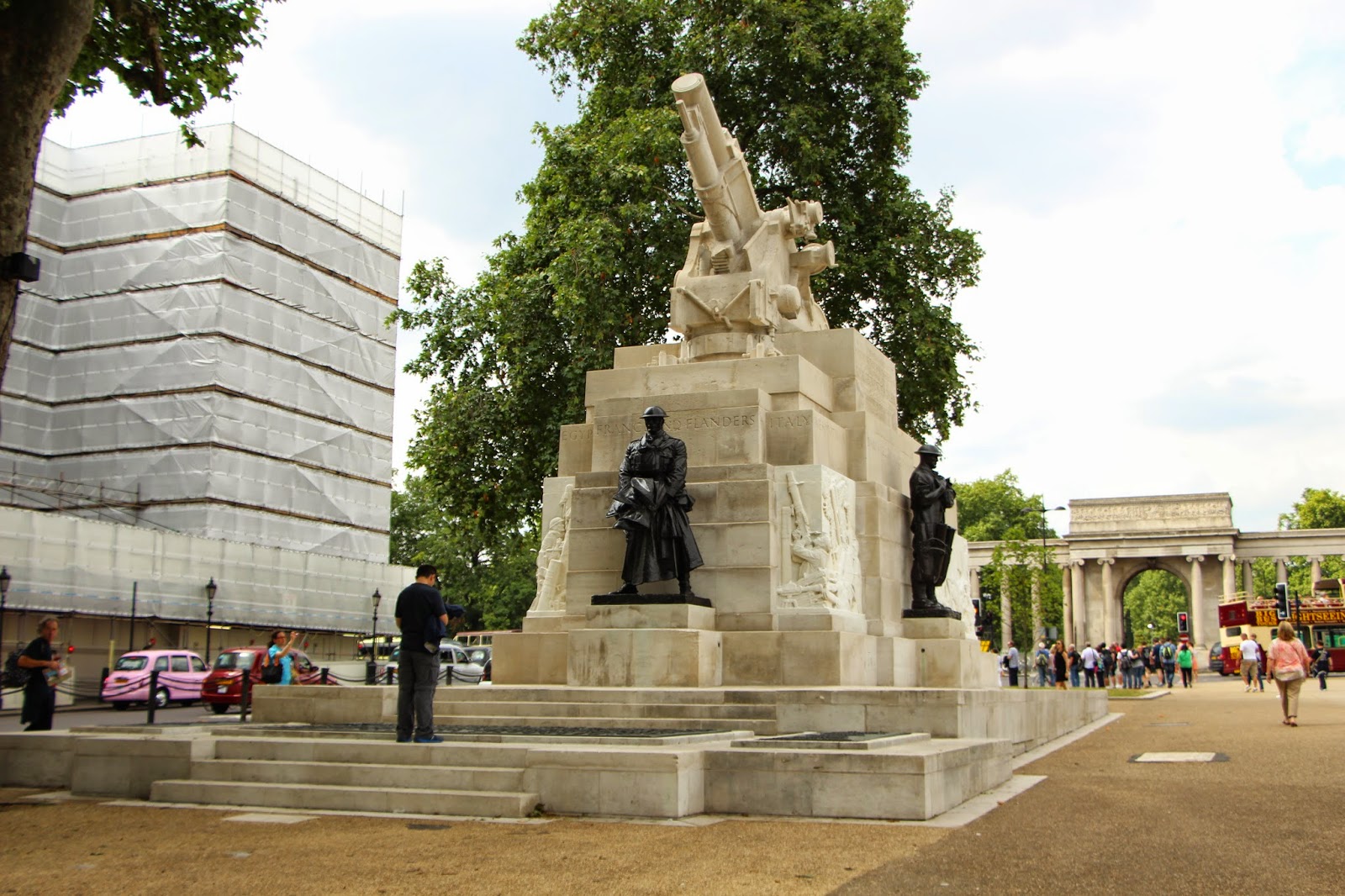London has a vast range of monuments, particularly in the Hyde Park area, in the Hyde Park Corner there are three for the World Wars. In this site there are also other three monuments, for other causes. Although there are a lot of monuments all over London, I thought it was interesting that they kept this site for monuments.
Machine Gun
Corps
It was opened in 1925, and commissioned by Francis
Derwert Wood. It has the image of a naked man, David, with a sword, Golias
sword, in bronze, in the top of a marble podium. In each side of David there is
a machine gun, with two leafs crows and one folded uniform.
In the back there is the explanation:
“ The Machine Gun Corps of which His Majesty King
George V was Colonel-in-Chief, was formed by Royal Warrant dated the 14th
of October 1915.
The Corps served in France, Flanders, Russia, Italy, Egypt, Palestine,
Mesopotamia, Salonica, India, Afghanistan, East Africa.The last unit of the Corps to be disbanded was Depot at Shorncliffe on the 15th day of July 1922. The total number who served in the Corps was some 11 500 Officers and 159 000 other ranks, of whom 1 120 Officers and 12 671 other ranks were killed and 2 881 Officers and 45 377 other ranks were wounded, missing or prisoners of war.”
Artillery Memorial
Charles Sargeant Jagger, 1925.
It is a memorial for artillery men killed in the WWI. The monument is mainly in marble, and has many levels. In the top there is a cannon. Below it, in one of the four faces, there is a soldier, three of them are caring clothes and guns, like they were travelling, and one of them is dead, covered with his helmet in his belly, under him there is the saying “here was a royal fellowship of death”. In the same level of the soldiers there are some engravings with war scenes. In the lower level there is a plaque, added later for the ones who died in the Second World War.
Australian War Memorial
11/11/2003
tonkin zulaikha greer architects
It is a monument to commemorate the Australians who fought along side Britain in the First and Second World War, and is offered by the Queen, Elisabeth II, and the prime ministers of both countries at the time, British, Tony Blair and Australian, John Howard . The monument is a curved and thick wall, of dark green stones (grey-green granite from western Australia). The wall has the name of the places were the ones who fought came from, and with some of them bold, forming the name of battlefields. The wall grows from the ground and as a constant water flow in the end, its higher side. There is also a plaque with the saying “wherever burden you are to carry we also will shoulder that burden.”
References:
http://www.royalparks.org.uk/press/factsheets-on-the-royal-parks/monuments/monuments-in-hyde-park

















No comments:
Post a Comment